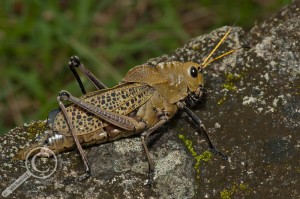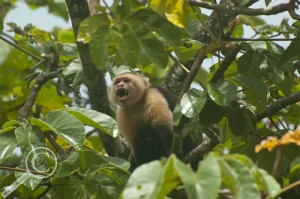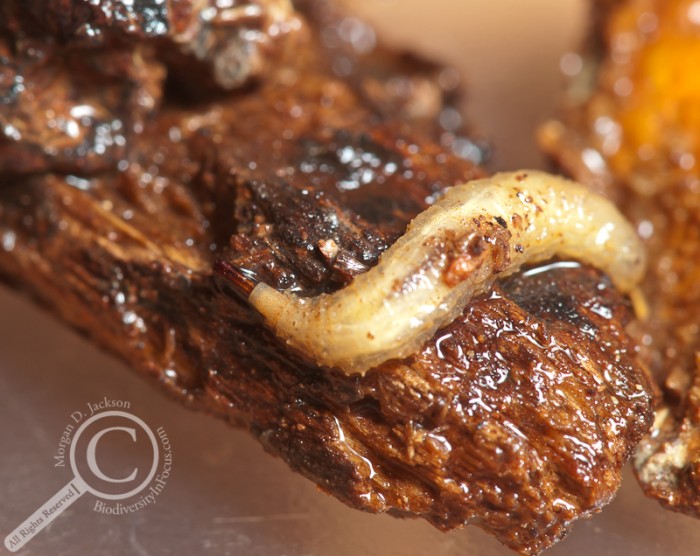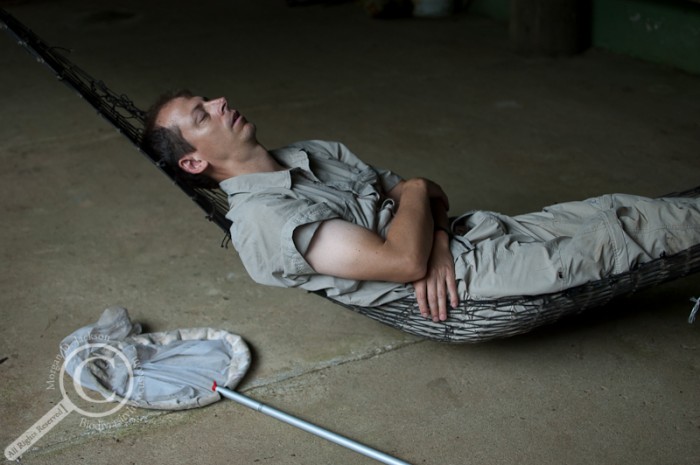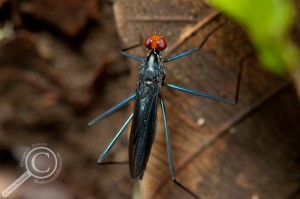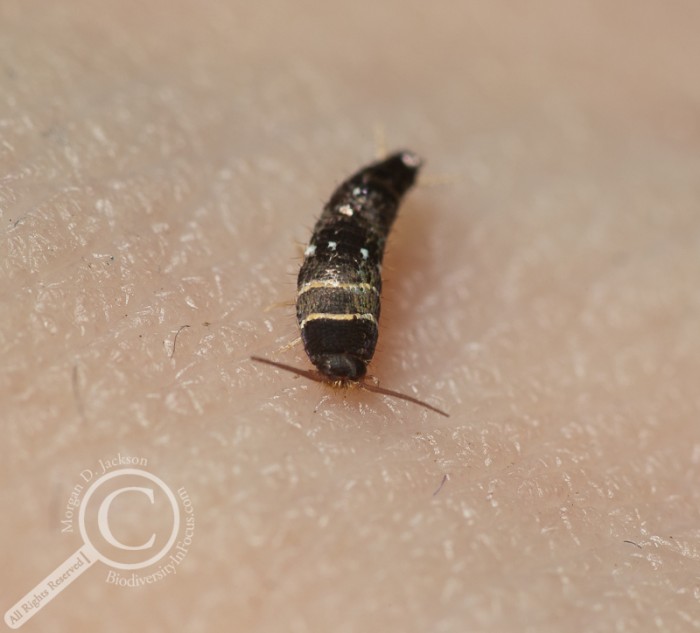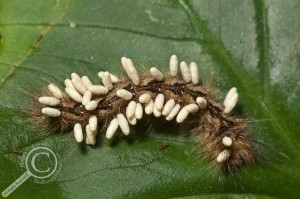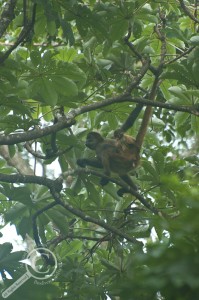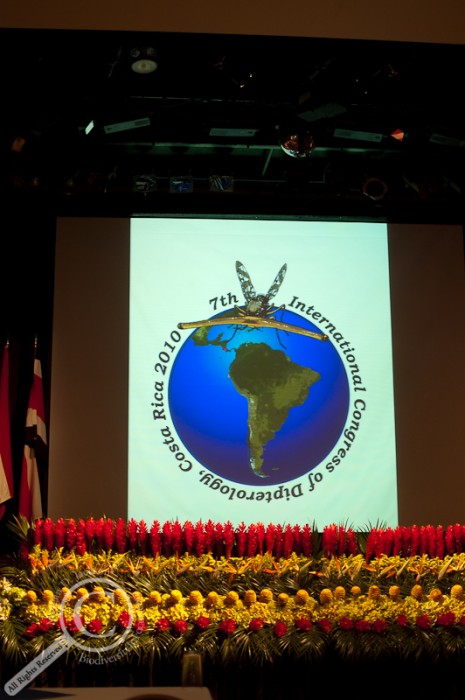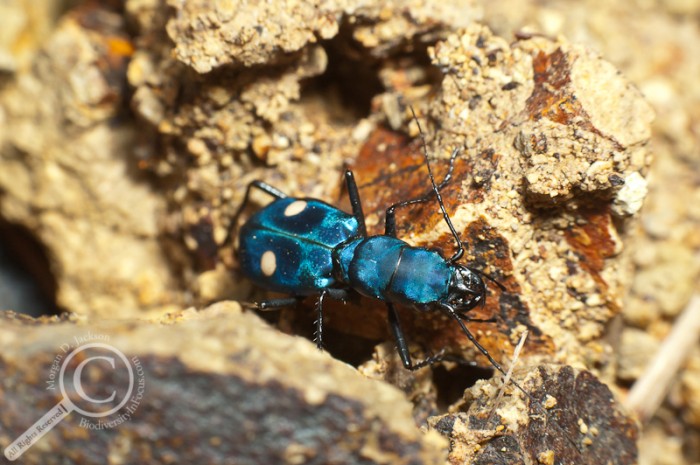The long days and late nights finally caught up with me this morning, so I slept in until a little after 8. I know, pretty adventurous of me! I felt much better this morning than the last few mornings however, and refreshed for the last 2 days of the conference and the field work following. The plenary session this morning was by Marty Condon, an ecologist/evolutionary biologist who works on the speciation patterns of a tropical genus of fruit flies (Tephritidae). Her research shows that 3 closely related but distinct species of fruit flies utilize 3 different regions of the same species of plant (one laying eggs in the flowers, one in the seed heads, and one in the stems I believe), a phenomenon that is relatively unheard of elsewhere in nature. When we think of niche partitioning, we generally think of one species as parasite and one species as host, so to have 3 species on the same plant at the same time and not getting confused over which of the other species they should be mating with (they look very, very similar until you look very closely at wing patterns and female ovipositor shape) or where to insert their eggs is pretty remarkable. Further proof that evolution is amazing and that assumptions can never be made about the natural world!
The rest of the day I spent in a symposium on using new technologies to increase the efficiency of Diptera taxonomy. There is a large push in the systematics community in general to develop and implement database systems at various stages of the taxonomic process, from species capture and curation, through to description and analysis of species, and finally to dissemination through resources such as keys or resources like the Encyclopedia of Life. The symposium today highlighted several models of these databases and briefly explained how each is being used, and highlighted the utility of each and where improvements might need to be made. This area of research (bioinformatics) really resonates with me, and I’m hoping to help implement and develop some of these programs during the course of my Ph.D. (eventually…). I signed up to participate in a half-day workshop learning how to use one of these systems, ScratchPads, and I’ll report back tomorrow night how that goes and my initial impressions. At the end of the day myself and most of the rest of the Ottawa and Guelph student crew caught a cab to downtown San Jose to have a nice dinner out at a restaurant that was recommended to us as the best restaurant in Costa Rica (Tin Jo Asian Restaurant)! The food fully lived up to the hype, with some fantastic appetizers and the very best curry I’ve ever had, and all at reasonable prices! I’d be remiss if I didn’t mention the sorbet sampler we had for dessert, with the passionfruit being my favourite of 5 unique flavours. Add in an extremely friendly front house manager recalling his stories of Canadians and our use of the word “eh” and it was quite the evening. One more day of the congress left, and then back into the wilds for some more collecting and shooting before heading home!
Most of this morning’s new digital tools talks were recorded and posted online, including my advisor Steve Marshall’s talk (although it seems the messed up and only recorded the audio, plus I can’t get it to work at the moment…). Additionally, all of the Powerpoint presentations themselves will be uploaded to The Diptera Site (they will probably be listed under the attachments link, although there are only 2 up there as of now)
Another buzz-worthy talk today was on the potential utility of the reflective properties of wings as thin films as identification and taxonomic characters. What this complicated sentence means is that when you shine a light on fly wings and have a black background behind them, a full spectrum of colours will shine off the wings (much like the rainbow you see on the outside of a bubble) and that there is evidence that these patterns might be species specific! Some really amazing photographs of these patterns. I’ll definitely be checking out the wings of my micropezids as soon as I get back to Canada!
Stores close really early down here (like 7pm at the latest for most it seems).
We saw a surprising number of “ladies of the night” openly working the corners of downtown San Jose on our cab ride back to the hotel. Definitely didn’t expect that profession to be so easily spotted!
I’ve included some (mostly poor) photos of some familiar faces giving their talks. I’ve also put in a few of the other people who have been doing talks:
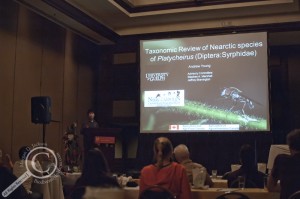
Andrew giving his talk on Platycheirus
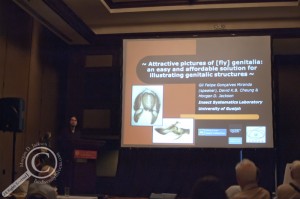
Gil introducing one of his 3 talks at this congress
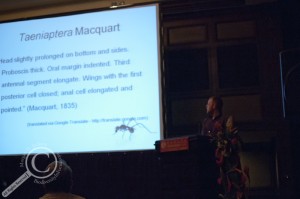
Me, presenting my work (thanks Joel for snapping the shot!)
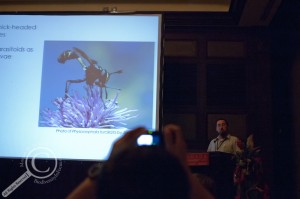
Joel Gibson, a friend from Ottawa presenting his work on Conopidae
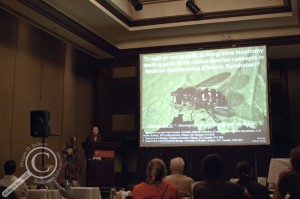
Michelle Locke, another friend from Ottawa discussing Dasysyrphus
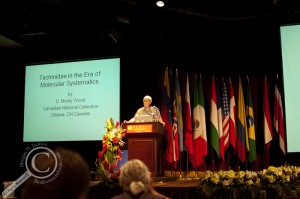
Dr. Monty Wood, one of the preeminent Canadian dipterists, talking about Tachinids on Wednesday
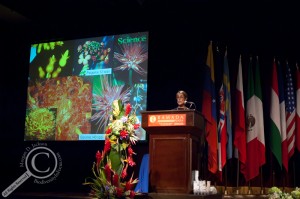
Dr. Marty Condon giving her Plenary Address on Tephritidae speciation

